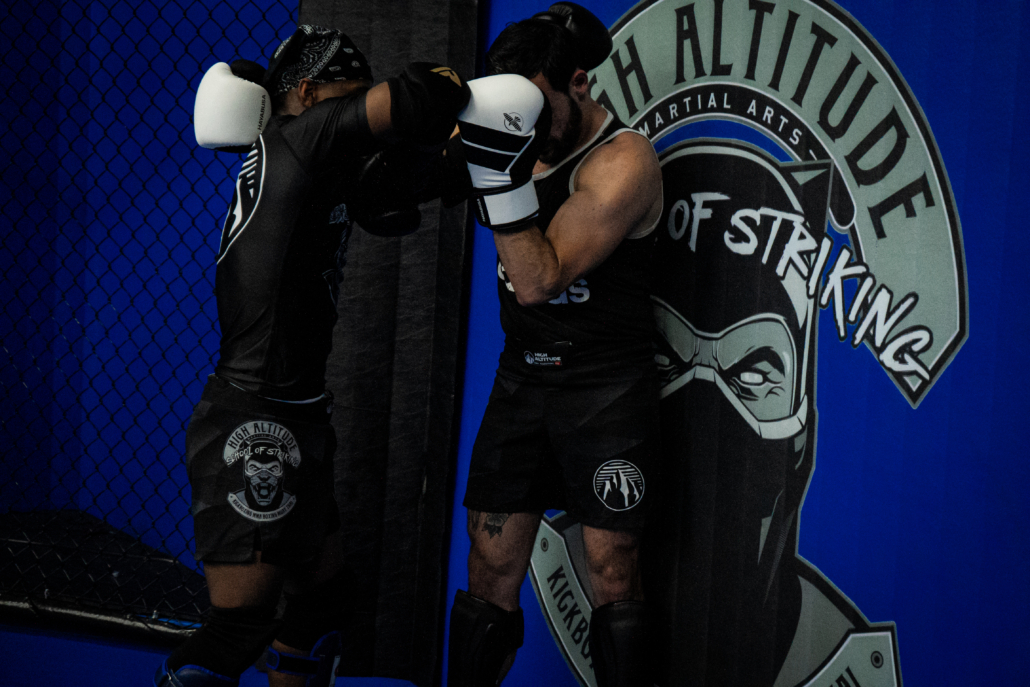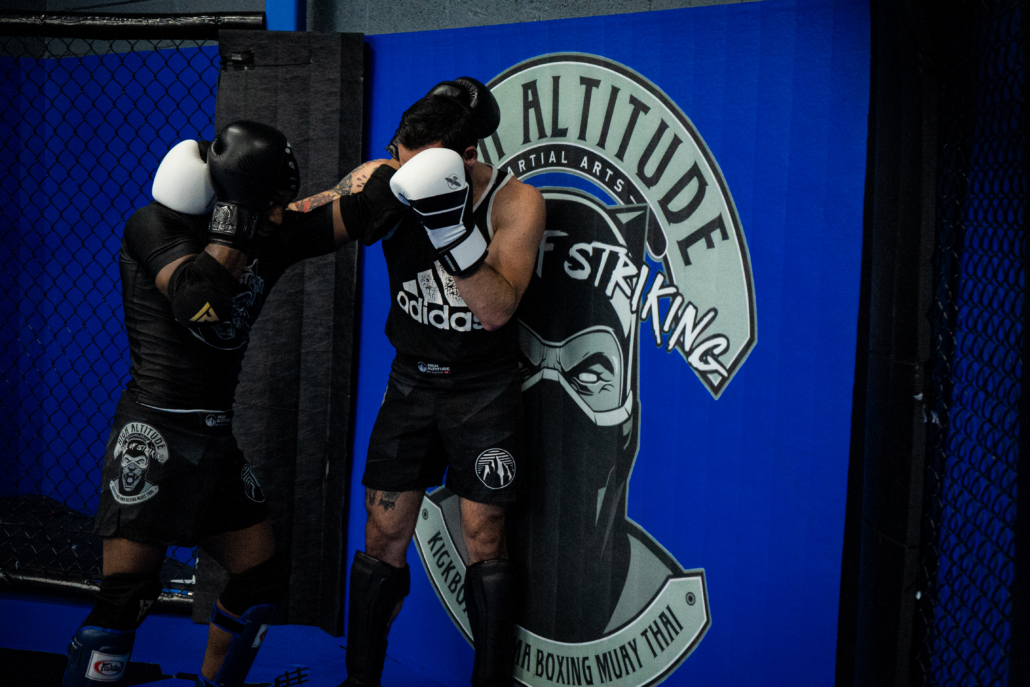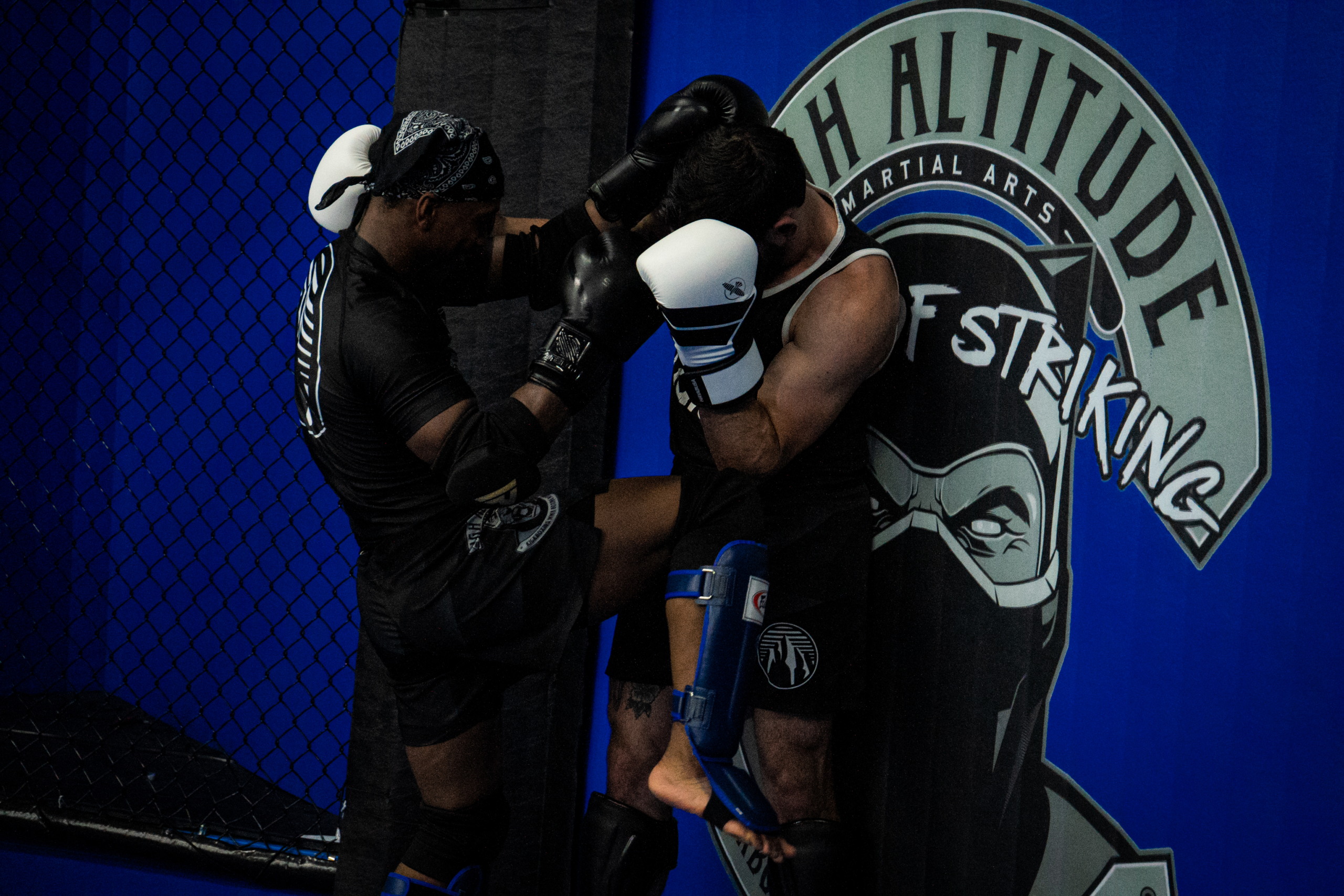Learning how to clinch might be one of the hardest defensive moves to master.
First, you have to be comfortable being extremely close with someone in their fight space while avoiding getting hit. Second, you must learn the dance of the sweeps, throws and more advanced moves such as the double collar, single collar, double underhook. Third, you have to do the first two things without exhausting yourself. Maybe then, you get out of the clinch alive and score some points.
The clinch is a favorite in Muay Thai. Although our School of Striking does not exclusively teach Muay Thai, the clinch is frequently used in our Striking and Kickboxing classes. The definition of clinch is “the part of stand-up fighting where the combatants are grappling in a clinch, typically using clinch holds. Clinching the opponent can be used to eliminate the opponent’s effective usage of some kicks, punches, and melee of weapons.” (Wikipedia)
Starting out as a beginner you must learn how to hand fight to defend yourself against your opponent and to improve position. When in the clinch, you are trying to control your opponent and decide which technique you will use when both are in the clinch and what you will do when you get out of the clinch.
If you want to pull your opponent down you will aim for the neck using the gable grip. First when aiming for the neck you can take control of your opponents hands by either parrying it or using your weight to pull them down and stepping into the clinch by adding a knee or elbow. This will lead you into what’s called a double collar. It is the most devastating position/clinch when learned correctly. Snake your arms inside your opponent’s guard to slide up and place your hand on the back of their head. From there, you want to do the same with the other and cover your first hand with the second. This is called a gable grip.


Control of the head allows for a greater range of control when moving the opponent downward. Most Jiu Jiitsu fighters already are comfortable with using and defending against hands. As a Striker, you are really good at using your feet/legs, then using hands. So practicing the gable grip with and without gloves is a very good way to get comfortable using your hands for defense.
Secondly, learning how to bring people in close once you are in clinch dance. It happens fast and strong. When you are highly disciplined in clinch your opponent will have you off your feet faster than you can blink. In the clinch you can work at getting your opponent off their balance simply but having great head or neck control. Once you have head or neck control and your opponent can’t stand up or right themselves you can go in for a fake knee and create a sweep instead. Without losing energy and exhausting yourself.
Third, get into clinch without exhausting yourself. Clinch is not a break to breathe, it is not a place to get your head right but some use it to get right and knock their opponent off their feet. Practicing clinching with your partner with or without gloves by working on hand positioning, feet positioning, hand on neck or hand on head will help with getting more and more comfortable being in that small space and not being able to think to have to come down to muscle memory and timing.
When learning to clinch, it may seem awkward and uncomfortable. But with the help of multiple different techniques, different skill sets, different hand placements, different holds, you will learn how the clinch will be effective in a fight.





